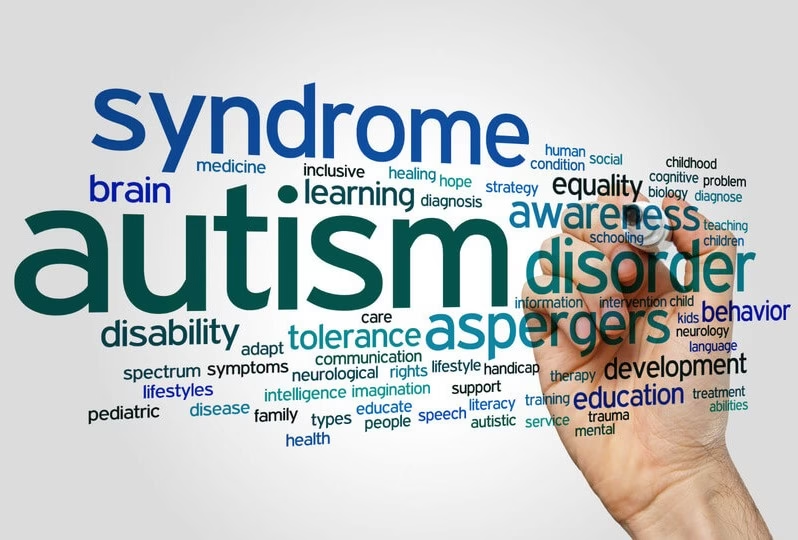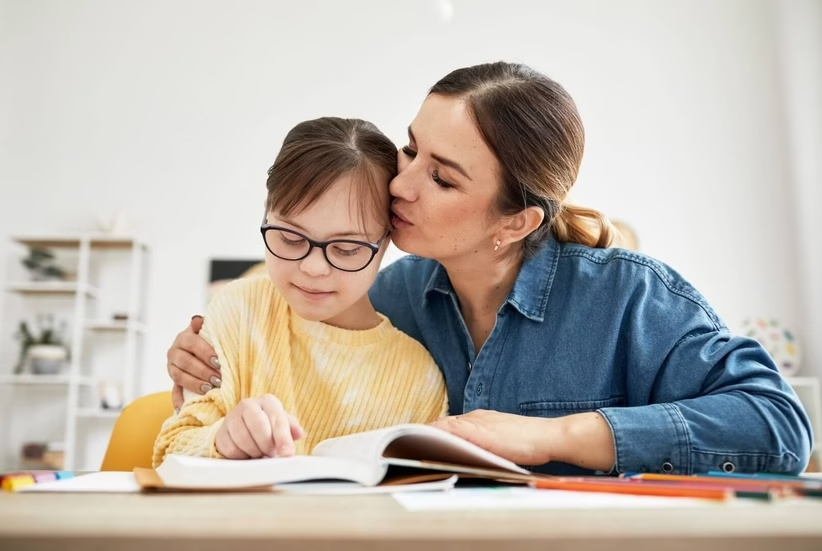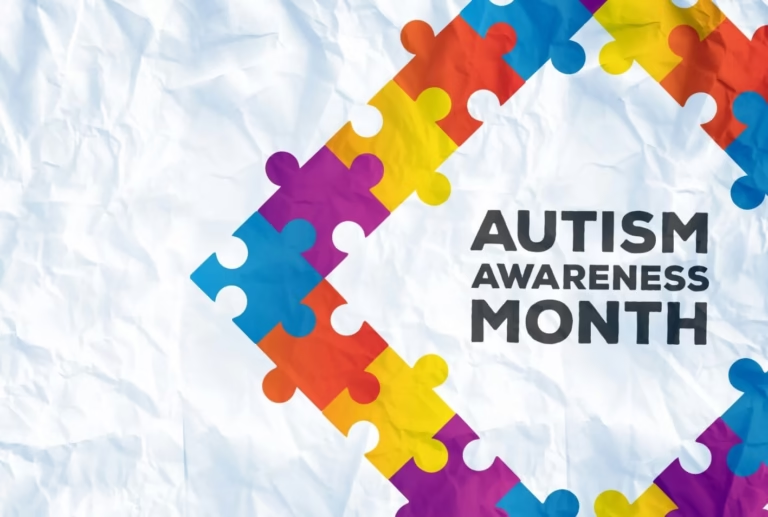When I was diagnosed with autism, the psychologist asked me how I felt about it. I was actually really confused, and although I knew a bit about what autism looked like, I had no clue that there were different types of autism and levels.
I remember saying that I had mixed emotions—both good and bad—but, honestly, I was still confused. What exactly is autism? What do the different types of autism spectrum disorder mean? How do other people see it? And what does this mean for me moving forward?
I knew I needed answers, so I immediately began to research. I scoured autism-friendly websites, blogs, and forums, trying to understand the different forms of autism and make sense of it all. One thing quickly became clear: there isn’t a single, unified way of understanding autism.
Some people view autism as a single spectrum, while others don’t. Some prefer labels like Asperger’s, which is no longer a formal diagnosis, and some reject labels altogether. Then, there are the extremes—those who believe autism can be “cured,” and those who firmly disagree.
In this post, I want to cut through the noise and explore what people really mean when they talk about the old forms of autism and the new ‘levels’.
I’ll also tackle some of the different questions people ask and look at how our understanding around the different types of autism has evolved into what it is today.
I firmly believe that knowledge is power. Whether you’re someone with autism, a caregiver for someone who is, or simply interested in understanding the different types of autism, this blog post aims to give you a solid understanding of the basics.
With this knowledge, you’ll be better equipped to engage with professionals and service providers, ensuring you can access the support and services you deserve.

What is Autism Spectrum Disorder (ASD)?
According to the UK National Autistic Society, autism is a spectrum condition that affects people in different ways.
It’s generally accepted that people with autism often experience a range of difficulties including:
- Social communication and social interaction challenges
People with autism often face challenges when it comes to picking up on social cues that others might take for granted. They may struggle to understand emotions and motivations in others, and engaging in small talk can feel particularly difficult.
Interpreting verbal intonation and tone can be tricky, making it less likely for them to initiate conversations. Reading body language and facial expressions is another area that can be tough to navigate.
- Repetitive and restrictive behavior
Repetitive behaviors are generally divided into two categories. The first, known as ‘lower-order,’ includes movements like fidgeting with objects or parts of the body, hand-flapping, or body rocking. The second, ‘higher-order’ behaviors, involve routines, rituals and a strong need for consistency.
- Over or under sensitivity to light, sound, taste or touch
For people with autism, the brain often processes sensory information differently than most. While each individual is unique, many experience discomfort, anxiety, or distress, which can sometimes lead to ‘challenging’ behavior as they try to cope.
When someone with autism finds it hard to filter out background stimuli or struggles to interpret sensory information, it’s called hypersensitivity. On the other hand, when they have difficulty registering sensory input, it’s known as hyposensitivity.
- Highly focused interests or hobbies
Another common trait in people with autism is a deep, highly focused interest in specific topics. While these special interests can sometimes become obsessive, many argue that this aspect of autism can be a strength rather than a challenge.
Just consider Greta Thunberg’s dedication to climate change or Elon Musk’s drive for technological innovation—both show how powerful focused passions can be.
When someone is suspected of having autism, the diagnostic journey often starts with an initial screening test. This is typically followed by a formal diagnostic assessment based on the criteria outlined in the Diagnostic and Statistical Manual of Mental Disorders, 5th Edition (DSM-5).
The DSM-5 evaluates the core characteristics of autism across five key areas:
- Criterion A: Persistent difficulties in social communication and interaction.
- Criterion B: Restricted, repetitive behaviors, interests, or activities.
- Criterion C: Symptoms must be present from early childhood.
- Criterion D: These symptoms must significantly impact social, work, or other important areas of functioning.
- Criterion E: These difficulties cannot be better explained by intellectual disability or global developmental delay.
The DSM-5 defines autism as a ‘spectrum disorder,’ emphasizing that everyone with autism is unique. While people with autism share common traits, these traits vary in intensity, with each individual having different types of autism symptoms and support needs.
However, this view is relatively recent. In the past, autism was divided into distinct categories, rather than being understood as part of a broad spectrum.

Evolution of Different Types of Autism and Diagnoses
Until the DSM-5 was published in 2013, autism spectrum types were diagnosed using different forms of autism labels. Unlike the dimensional approach we use today, these different types of autism diagnoses aimed to define specific behaviors for each condition. The diagnoses were outlined in the DSM-IV (the predecessor to the DSM-5) and included:
- Autistic Disorder (Classic Autism)
The diagnosis of Autism Disorder preceded the current categories of Autism Spectrum Disorder (ASD) we use today.
It was primarily marked by significant difficulties in social interaction and communication, along with a very restricted range of behaviors and interests.
Under the DSM-IV, the diagnostic criteria for autism included speech and language delays, with symptoms needing to be evident before the age of 3.
These criteria later were revised with the release of the DSM-5, which introduced a broader approach to diagnosing autism.
Classic autism was typically characterized by the following traits:
- Social interaction challenges
- Communication difficulties
- Repetitive behaviors and intense, specific interests
- Limited imaginative play
- Heightened sensitivity to sensory experiences
- Intellectual and cognitive challenges
- Asperger’s Syndrome
Asperger’s syndrome was a developmental disorder characterized by ongoing challenges with social interaction and a tendency toward restricted, repetitive behaviors and interests.
To receive an Asperger’s diagnosis, these difficulties had to significantly impact on a person’s social, work, or other important areas of life.
The primary distinction between Asperger’s and Autistic Disorder was that Asperger’s did not involve significant language delays. Historically, and controversially, it was often considered a “high-functioning” form of autism.
Key traits associated with Asperger’s included:
- Difficulty grasping abstract ideas
- Avoidance of eye contact with peers and adults
- Trouble interpreting social cues in conversation and play
- A strong preference for routine and resistance to change
- Deep focus on a specific area of interest
It’s also worth noting that Asperger’s syndrome is named after Hans Asperger, an Austrian psychiatrist who, during World War II, was connected to the Nazi regime.
- Pervasive Development Disorder-Not Otherwise Specified (PDD-NOS)
Pervasive Developmental Disorder – Not Otherwise Specified (PDD-NOS) was a diagnosis given when someone showed signs of a pervasive developmental disorder but didn’t fully fit into the criteria for any of the other types of autism related conditions.
It was used to describe individuals who struggled with social interactions, had atypical communication or behaviors, but didn’t meet the full criteria for autism or another related diagnosis.
In essence, PDD-NOS was a way for clinicians to say, “This person shows traits of autism, but not enough for a formal diagnosis.” The severity of symptoms could vary widely, from mild to severe.
Common characteristics included:
- Challenges with social interactions
- Difficulty with language comprehension and use
- Uneven development across skill areas
- Issues with nonverbal communication
- Unusual responses to sensory inputs, such as sound, touch, taste, or smell
- Repetitive behaviors or routines
- Intense focus on specific interests or activities
Some parents and adults preferred the PDD-NOS label as it was seen as less stigmatizing than the different forms of autism at the time. However, the diagnosis was often viewed as vague, leaving uncertainty about what it truly meant to have PDD-NOS.
- Childhood Disintegrative Disorder (CDD)
Childhood Disintegrative Disorder (CDD), also known as Heller’s syndrome, was a rare developmental disorder characterized by a child’s regression in multiple areas after about two years of typical development. Affecting an estimated 1–2 in 100,000 children, CDD usually appeared around ages 3 to 4 and could occur gradually or suddenly.
The hallmark of CDD was the significant loss of previously acquired skills, typically between the ages of 2 and 10, including:
- Social interaction abilities
- Language comprehension and communication skills
- Self-care and adaptive behavior
- Motor coordination
- Engagement in play activities
- Bladder and bowel control
CDD was sometimes described as a “low-functioning” form of autism due to its association with impairments in social interaction, communication, and repetitive behaviors or restricted interests.
- Rett Syndrome
Rett Syndrome is a rare genetic disorder that is distinct from other conditions listed here, because it continues to be diagnosed today. Previously considered part of the autism spectrum, it is now recognized as its own neurological disorder caused by a genetic mutation affecting the brain.
The syndrome is believed to affect around 1 in 10,000 girls born each year and is extremely rare in boys. According to the UK NHS, Rett Syndrome typically progresses through four stages, although symptoms may overlap at different points during the disorder’s development.

The typical features of each stage are:
Stage 1: Early Signs
In the first stage, the child develops normally for at least 6 months but may show subtle signs of Rett syndrome, such as low muscle tone, difficulty feeding, repetitive hand movements, problems with speech, and mobility issues. Symptoms typically begin between 6 to 18 months and can last several months.
Stage 2: Regression
The regression stage begins between 1 to 4 years old, when the child loses previously acquired skills such as hand movements, speech, and motor skills. This stage is marked by social withdrawal, irritability, unsteadiness, and difficulties with eating and sleeping, and usually lasts between 2 months to 2 years.
Stage 3: Plateau
The plateau stage can begin from 2 to 10 years old, and is characterized by some symptoms improving, such as less irritability and better attention and communication. However, challenges like seizures and irregular breathing can persist, and weight gain is often a problem.
Stage 4: Deterioration in movement
The final stage lasts for years and involves issues such as scoliosis and muscle weakness, leading to the loss of walking ability. Communication and cognitive functions generally stabilize, but repetitive hand movements can slow down and seizures become less frequent.
Table 1. Comparison of DSM-IV and DSM-5 Diagnostic Criteria for Autism
| DSM-IV Pervasive Developmental Disorders | DSM-5 Autism Spectrum Disoder (ASD) | |
| Subcategories | Autism, Asperger’s Syndrome, PDD-NOS, Rett syndrome, Childhood Disintegrative Syndrome | None – DSM-5 encompasses former subcategories of Pervasive Developmental Disorders |
| Requirement for Diagnosis | Must meet 6 of 12 behavioral criteria | Must meet all 3 behavioral criteria |
| Criteria Domains | Three – language / communication, social interaction and repetitive behaviors | Two – social communication and restricted, repetitive behaviors |

Reframing the Old Types of Autism as New Levels
The previous method of categorizing autism was discontinued in 2013 with the release of the DSM-5 manual. The DSM-5 adopted a broader approach to autism diagnosis, merging the five separate categories into the single autism spectrum we recognize today.
Instead of using different types of autism related labels based on how an individual presents, the DSM-5 now defines autism using ‘levels’ on the spectrum, which are determined by the person’s need for support.
These levels help clinicians make more accurate diagnoses, create tailored treatment plans, and assist caregivers in understanding the individual’s specific symptoms and needs.
Level 1
Level 1 is the mildest form of autism, encompassing individuals who generally need the least support. Those at Level 1 may find it challenging to communicate with neurotypical people, such as having trouble saying the right thing at the right time or understanding social cues.
They might also struggle with making and maintaining friendships. Many people at this level can mask their difficulties, which can affect how others perceive them and make it harder to access the support they need.
Level 2
Level 2 describes individuals who have more difficulty masking their challenges compared to those at Level 1. They tend to be more rigid in their behaviors and struggle with changes in routine.
Communication and social interaction can be challenging in ways that stand out to neurotypical society. Their behavior may seem out of place, like a child rocking back and forth in class or an adult repeating the same phrase in a work meeting.
Level 3
Level 3 is the most severe level, involving individuals who require the highest level of care and support. They generally cannot mask their challenges and experience significant difficulties with communication and repetitive behaviors.
These challenges often make daily tasks, social interactions, and adapting to change very difficult. People at Level 3 rarely initiate conversations and may appear awkward when they do.
Table 2. The Old Types of Autism Re-Organized Into New Levels
| Level 1: Requiring Support | Level 2: Requiring Substantial Support | Level 3: Requiring Very Substantial Support |
| Mildest level, highest functioning | Noticeable difficulties in social interactions, even with assistance | Significant challenges with both verbal and nonverbal communication |
| Difficulty starting social interactions | Issues with verbal and nonverbal communication | Frequently engaging in restrictive or repetitive behaviors that disrupt all areas of life |
| Reduced interest in social engagement | Struggles with adapting to change | Shifting focus or activities causes intense distress |
| Difficulty transitioning between tasks | Shifting focus or activities can lead to distress | Major challenges dealing with any changes |
| Problems with organization and planning | Restrictive or repetitive behaviors occur frequently | Rarely speaking coherently, often using few words |

Practical Guidance on How to Support Individuals With Different Forms of Autism
There are a number of simple strategies you can use to support individuals across all levels of the autism spectrum types.
It’s important to recognize that autism is a lifelong condition, and the idea of ‘curing’ autism is considered offensive to many in the autistic community.
However, there are various interventions that can help:
Educate Yourself
The first and most crucial step is to equip yourself with knowledge about the different forms of autism. Learn about the unique characteristics and challenges autistic individuals may face.
To better understand their perspective, explore stories on the National Autistic Society Blog or follow social media profiles like me_us_and_autism and neurodivergent_lou on Instagram.
Communicate Clearly
Autistic people may struggle to communicate in ways that neurotypical individuals expect. Both sides might have difficulty reading body language and social cues, and autistic individuals often interpret things literally.
Be mindful that they might come across as direct or blunt, and avoid sarcasm and rhetorical questions when possible.
Be a Good Listener
Taking time to listen and show that you care makes autistic individuals feel valued. The need to be heard is fundamental, and this is just as true for those with autism as for anyone else.
Help Create Routine
Autistic people thrive on routine and structure, which helps them feel safe and reduces anxiety. Sudden changes in routine can cause stress or upset, so try to communicate any changes in advance to help them adjust.
Conclusion – A Better Grasp of The Different Forms of Autism
In this post, we explored how our understanding of autism has evolved, moving from distinct kinds of autism to the three levels of support we use today.
My goal was to clear up the confusion surrounding autism classifications, and I hope this has helped clarify the difference between the older types of autism definitions and the newer levels of autism and how this new framework empowers both individuals with autism and their caregivers.
As someone diagnosed with autism later in life, my journey has been one of learning and acceptance. With a better understanding of autism, I encourage you to keep expanding your knowledge to support autistic individuals in more meaningful ways.
Together, we can create a world where autistic people are fully accepted and understood, free from unnecessary labels. By continuing to learn, we can positively impact the lives of those with autism and foster an inclusive environment for all.
Frequently Asked Questions
Click here to view
What is Autism Spectrum Disorder (ASD)?
Autism Spectrum Disorder (ASD) is a neurological condition that affects individuals in various ways. Core characteristics often include challenges in social communication, repetitive behaviors, and sensitivity to sensory inputs. Each individual is unique, and the intensity of traits can vary widely.
What are the key traits of Pervasive Developmental Disorder-Not Otherwise Specified (PDD-NOS)?
PDD-NOS was a diagnosis for individuals showing traits of autism without meeting full criteria for other subtypes. It was often viewed as vague, leading to confusion. Under the DSM-5, these individuals are now classified under the broader ASD spectrum.
What is Childhood Disintegrative Disorder (CDD)?
CDD, or Heller’s Syndrome, involved children losing previously acquired skills after normal development for about 2 years. It’s now included under Level 3 of the ASD spectrum due to the severity of support needs.
What’s the best way to discuss autism respectfully?
Terminology preferences vary. Some prefer “person with autism,” while others use “autistic person.” When in doubt, ask how someone prefers to be referred to. Avoid stigmatizing language, and respect self-identity.
Why is understanding the evolution of autism classifications important?
Knowing how autism classifications evolved helps demystify outdated labels and promotes acceptance. The shift from rigid categories to a spectrum approach recognizes the diversity of autistic experiences and supports tailored interventions.






















